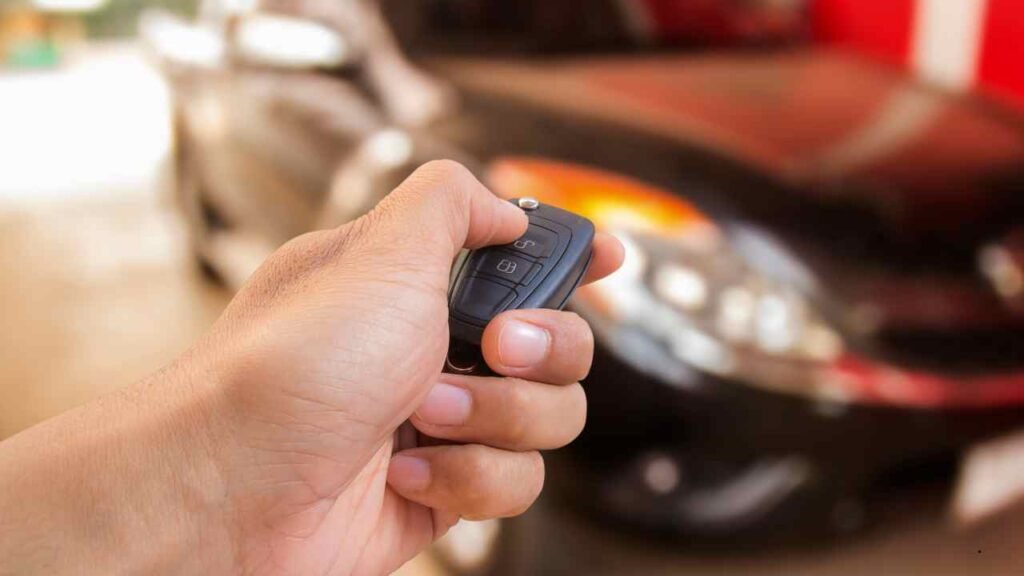Introduction
A key fob is a small, battery-powered remote that lets you unlock, lock, and sometimes start your car without using a traditional key. It adds convenience and security — but like any battery-powered device, it won’t last forever.
If your car isn’t responding when you press the buttons or the remote only works up close, you might be dealing with a low or dead battery.
So, how long does a key fob battery last?
Let’s break it down, including signs of a dying battery, tips to make it last longer, and how to replace it easily.
Average Lifespan of a Key Fob Battery

On average, a key fob battery lasts between 2 to 5 years, depending on several factors like how often you use it and whether your fob uses passive keyless entry (where it communicates with your car even while in your pocket).
Quick Summary:
- Light usage (backup key): 4–5 years
- Daily use (normal): 2–3 years
- Smart key fobs (proximity sensors): 1.5–2.5 years
Most key fobs use coin cell batteries like CR2025 or CR2032, which are small, flat, and inexpensive.
Signs Your Key Fob Battery Is Dying
You don’t want to wait until you’re locked out of your car. Watch for these early signs of a weak key fob battery:
- Decreased Range: You have to stand closer than usual to the car.
- Slow Response: The car takes a few seconds to respond after pressing a button.
- Intermittent Function: Sometimes it works, sometimes it doesn’t.
- Dashboard Warning: Some vehicles will alert you to low battery.
- Remote Start Fails: If your car has push-button start, it may not detect the fob.
If you notice any of these signs, replace the battery soon to avoid getting stranded.
What Factors Affect Key Fob Battery Life?
Several things can influence how long your key fob battery lasts:
1. Battery Type
- CR2025 and CR2032 batteries have different capacities.
- Higher mAh = longer battery life.
2. Type of Key Fob
- Smart fobs constantly communicate with your vehicle = faster drain.
- Standard fobs only transmit when buttons are pressed = slower drain.
3. Usage Frequency
- Daily drivers will use the fob more, shortening battery life.
4. Temperature Conditions
- Extreme cold or heat can shorten battery life or affect performance.
5. Battery Brand & Quality
- Cheap batteries die quicker.
- Use trusted brands like Duracell, Energizer, Panasonic.
How to Extend Your Key Fob Battery Life
Want your battery to last longer? Try these simple habits:
- Avoid unnecessary button presses. Don’t play with it in your pocket.
- Keep away from metal objects. They can interfere with signals, causing the fob to use more power.
- Store in a cool, dry place. Avoid extreme heat (like in a car dashboard).
- Use sleep mode. Some smart fobs let you manually disable signal transmission.
- Turn off proximity detection if your car has a manual option.
Pro Tip: Keep a spare fob or battery in your glove compartment for emergencies.
How to Replace a Key Fob Battery
Most key fob batteries are easy to replace. You don’t need a mechanic — just a small flat tool and a few minutes.
Step-by-Step:
- Find the battery type. Usually printed inside the fob or in the car manual (commonly CR2032).
- Open the case. Use a coin or small flathead screwdriver to pry open the fob.
- Remove old battery. Carefully take it out using a plastic tool or your finger.
- Insert new battery. Make sure the + side faces up.
- Close the fob. Snap the case back together and test it.
If your car doesn’t detect the new battery, try locking/unlocking manually or consult your vehicle’s manual.
FAQs
How much does a key fob battery cost?
Typically $2 to $5 depending on the brand and type.
Do I need to reprogram my key fob after replacing the battery?
No in most cases. The programming is stored in the fob’s chip, not the battery.
Can I use any CR2032 battery?
It’s best to use high-quality brands. Cheap ones might not last long or fit properly.
How do I know which battery my fob needs?
Check the user manual, inside the fob casing, or search your car’s make + model + “key fob battery type” online.
Conclusion
Key fob batteries may be small, but they power a big convenience in your daily life.
Most last 2 to 5 years, but usage, environment, and battery type all play a role.
Watch for early signs of battery failure, know how to replace it yourself, and keep a spare handy — so you’re never locked out unexpectedly.
